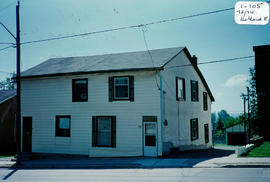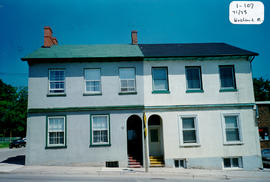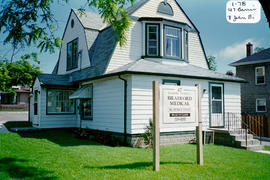73 Holland Street West - The William Curry House
- CA BWGPL GJ-HB-2017-04-01-02
- Item
- 1995
Part of George Jackson fonds
The William Curry House is a mid-block building located at 73 Holland St. West. It was built in the Gothic Revival style around the 1890’s. Bill Curry, a carpenter, and his wife and children (Harvey and Jessie) moved here from the 14th Line, West Gwillimbury. Members of the Curry family have lived in this house for many decades.
The two-storey, ‘L’-shaped building has large window openings, high floor to ceiling heights, and a medium-pitched, gable roof. The shutters (but probably not the colour) may be original. A wrap-around entrance porch is original and has Regency overtones. Although the windows and doors have been replaced, the original wood, lug sills remain. The building has brick veneer on wood frame construction. Window awnings and attic vents are twentieth-century alterations. The soffit infill, if original, has an altered eaves detail. According to the 2000 inventory, the building is surrounded by a well-maintained, landscaped yard. (1, 2, 3)
George Jackson










